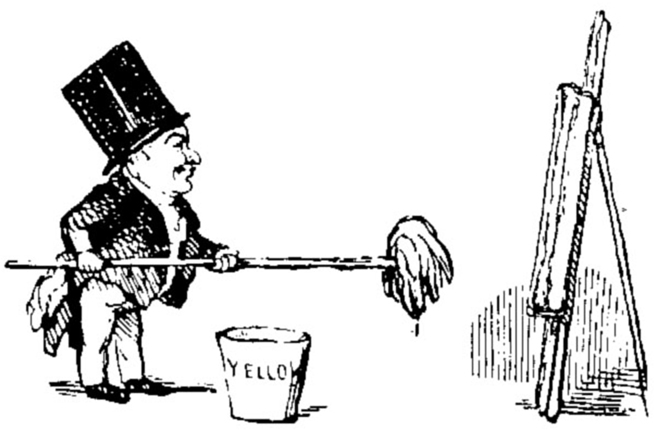So to the DeYoung museum we drove today, only to learn that our tickets were also good for a simultaneous exhibit over at the Legion of Honor that also had some Turner, as well as Constable, Gainsborough, and others. (Did you know that Edward Lear painted? I had not.) So, though tired and arted out, we drove over there too, and were glad we did, for though very interesting it was much smaller and wouldn't have been worth a separate trip.
The main Turner exhibit at the DeYoung is of his late works, from 1835 on. There were several rooms' worth. Even leaving aside the unfinished works of a few shades over white canvas, Turner's art of this period is mostly of very bright colors, with faint and uncontrasting figures and scenery hard to make out. This one is a good example, and to underline the point its title is "Angel Standing in the Sun".

The creativity and daring of this is what's impressive. And to think that Thomas Kinkade called himself "the Painter of Light". He didn't know a photon's worth of light next to the blazing sun of J.M.W. Turner.
Of course, Mr. Turner's contemporaries were often baffled too. Some of them who liked his earlier work thought he'd gone mad. (A similar reaction to what some devotees of Beethoven - only 4 1/2 years Turner's senior, though he didn't live as long - had to the Ninth Symphony and the Grosse Fuge.) A common view of Turner's late art at the time, reproduced in the exhibit, was this:


No comments:
Post a Comment